‘The Duke of Edinburgh Challenge’ Jordan 2018
POST PRODUCTION
COLOR CORRECTION
RAHHALA TEAM
Nora Ruwaished
Marwan Douleh
Suzanne Al Hoube
THE ADVENTURE BEGINS
Suzanne Al Hoube: Business woman and entrepreneur; also the first Palestinian woman to climb Mt. Everest as well as having climbed all 7 summits.
The adventure tourism agency known as ‘Rahhala’ was founded by Suzanne Al Hoube, also known as the first Palestinian woman to climb Mount Everest. The Arabic word ‘Rahhala’ is a play on words, loosely translated to the English word “journey” or “traveling”. Suzanne Al Hoube has an undoubtedly amazing track record when it comes to expeditions and adventures; she has climbed many of the world’s highest summits.
Queen Alia International Airport
This expedition was divided into two parts; the first half was dedicated to meeting the international students at the Queen Alia International Airport in Jordan and then drive on south to the rose city of Petra, the 8th wonder of the world. After spending a day in Petra traversing through the canyons of ‘Al Siq’ and then to ‘Al Khazneh’ - the familiar large stone architectural structure associated with Petra. The journey then continued to the humbling and immense desert landscape of Wadi Rum.
TRAVELING TO THE LOST CITY OF PETRA
Petra is located deep past the city of Wadi Musa in Jordan. There is a large tourist gate that separate the modern city from that of the old city of Petra. The monument of Petra has become a world heritage sight as well as a one of the Wonders of the World.
The fascination of the site itself stems not only from the wondrous rose colored stone found throughout the landscape, but as well as the intricate detail carved out of the mountains. There is a certain inherent artistry inspired by the architecture of Petra, in much the same way a sculptor chips away at stone in order to reveal the marvelous shape of the art; Petra had been similarly painstaking formed with the tenderness and care of an artist, a testament standing the test of time.
NOT MY PICTURE (story below)
The picture above was not taken by me! In fact as I was photographing the students when the tour guide who we had brought on from Petra came up to me and asked me if I had a wide lens, I said yes. He proceeded to ask me for my camera and then while looking at me and saying "thank you, just one moment.", he knelt down without breaking eye contact and took this picture and then handed me the camera back. Stunning.
ONWARD TO WADI RUM
BASE CAMP IN WADI RUM
The first night in Wadi Rum was thanks to the cooperation of a Rahahala Tour guide, by the name of Marwan Doule, and a local camp owner who was working with the travel agency in order to accommodate all the people who came for this trip.
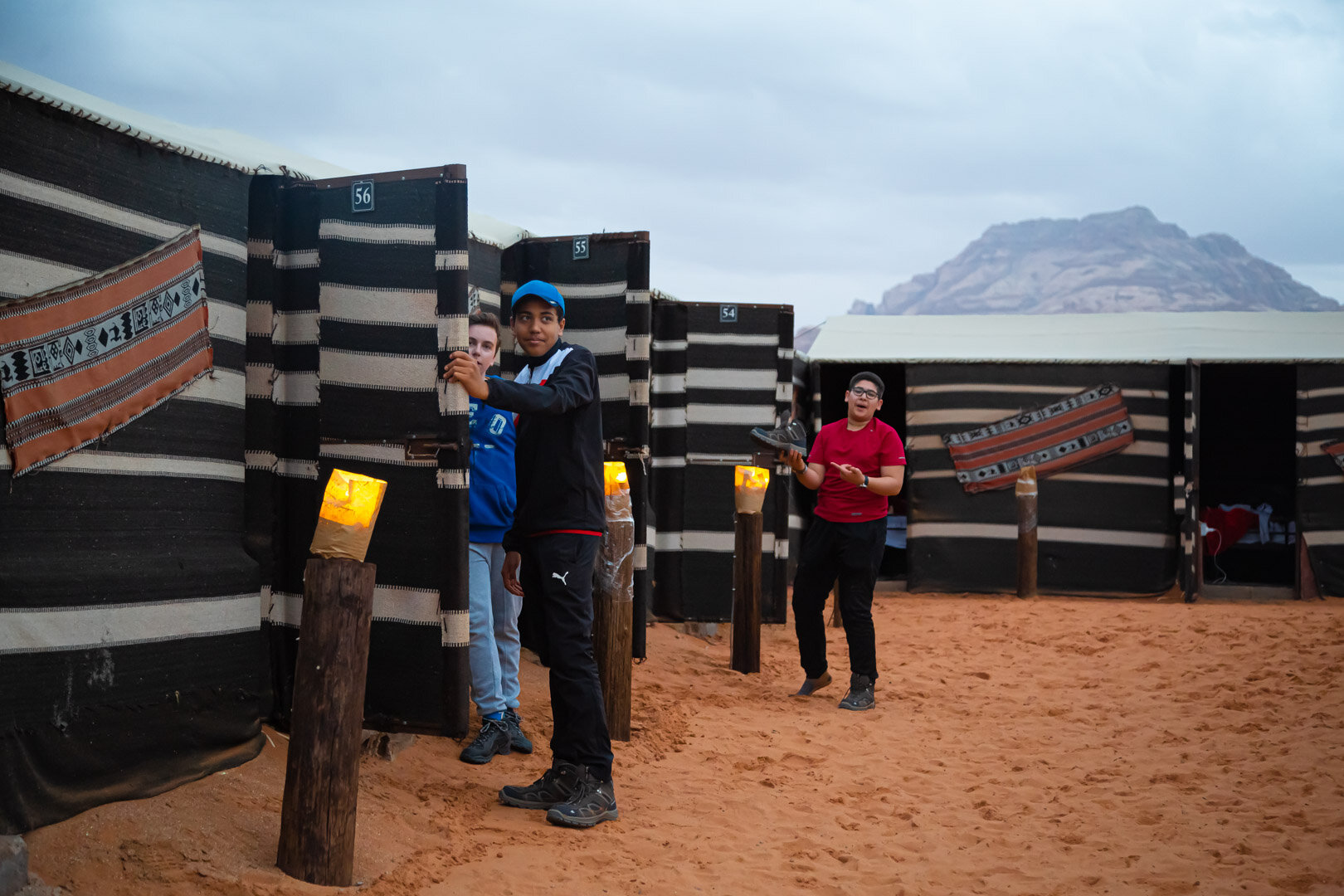
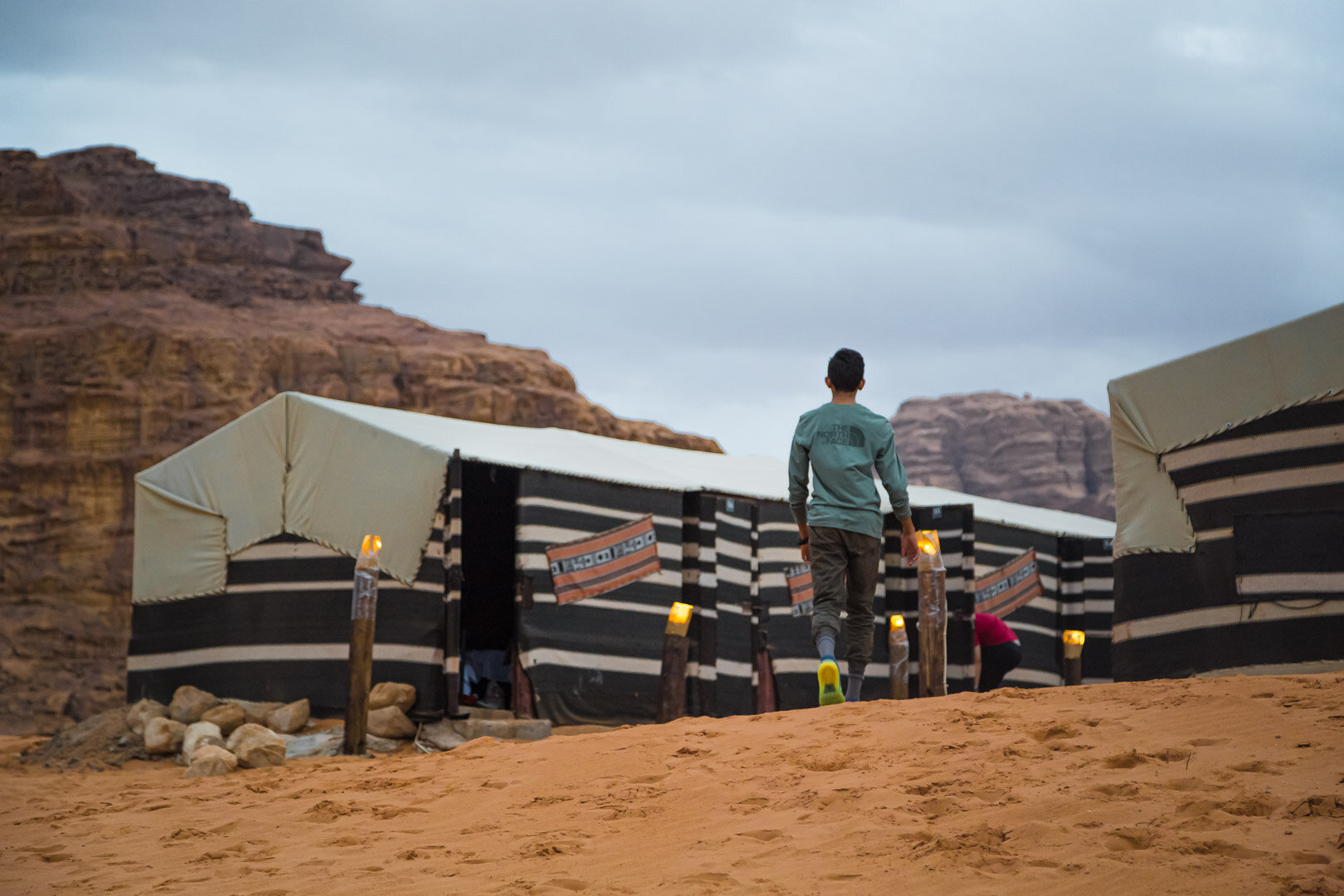
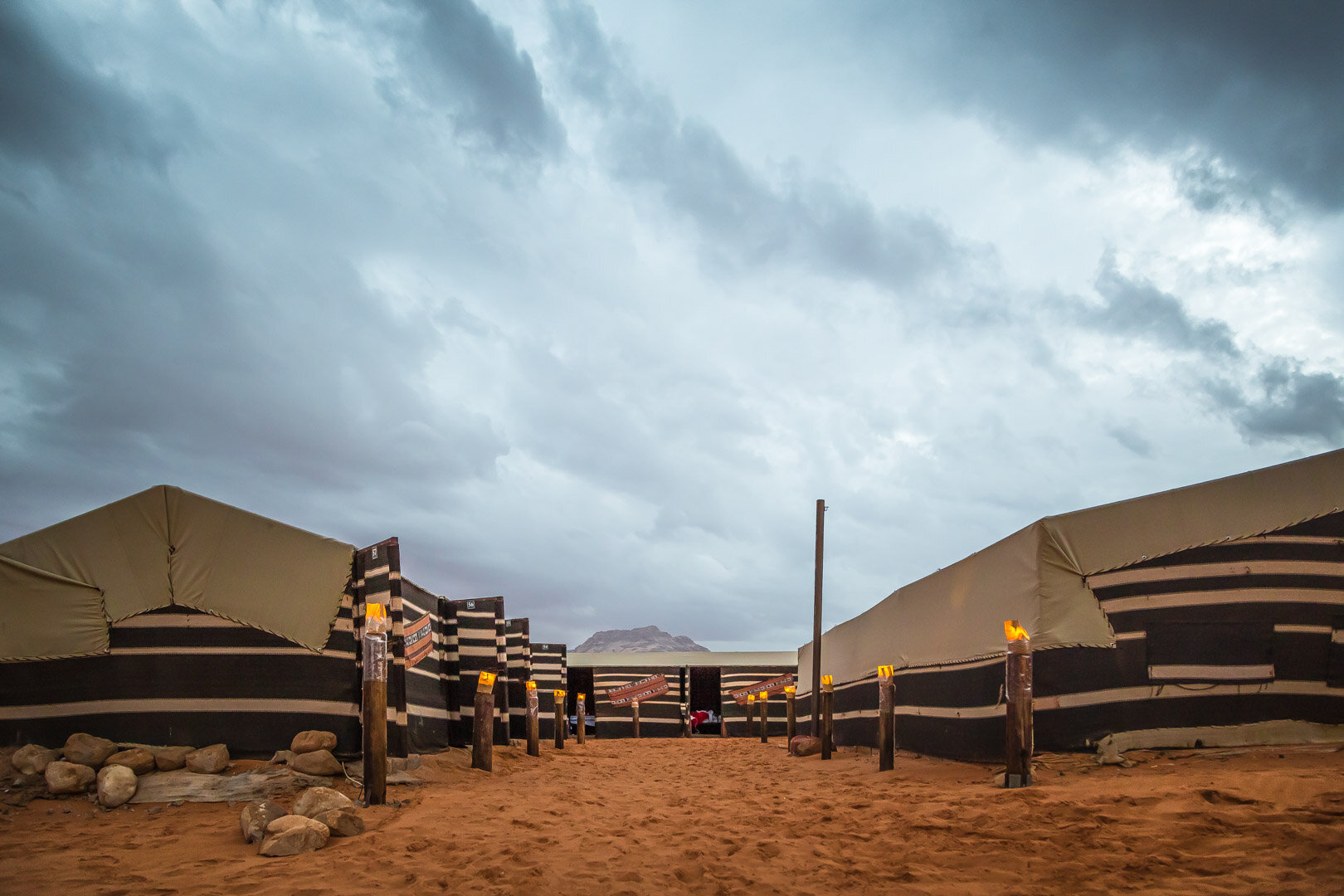
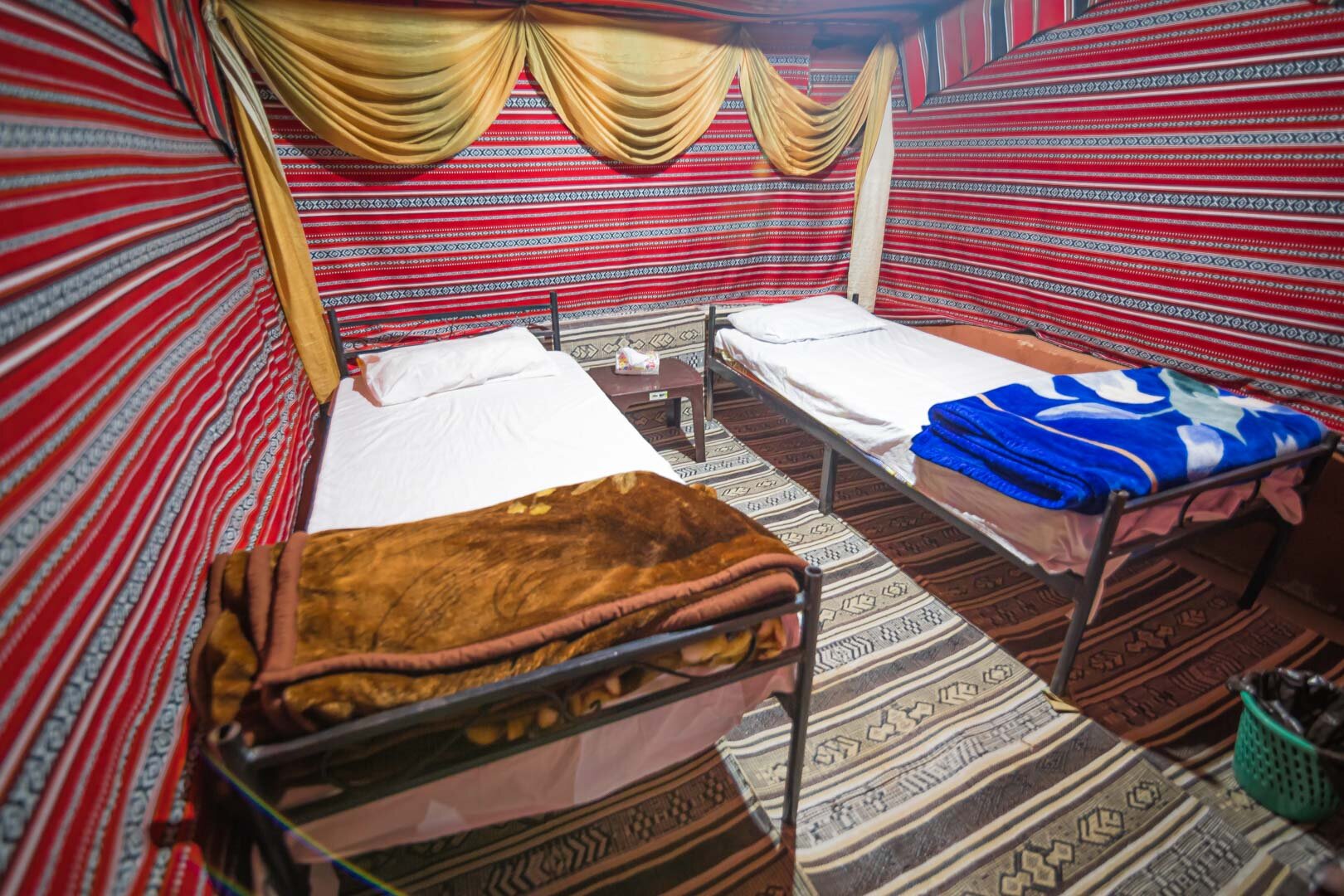
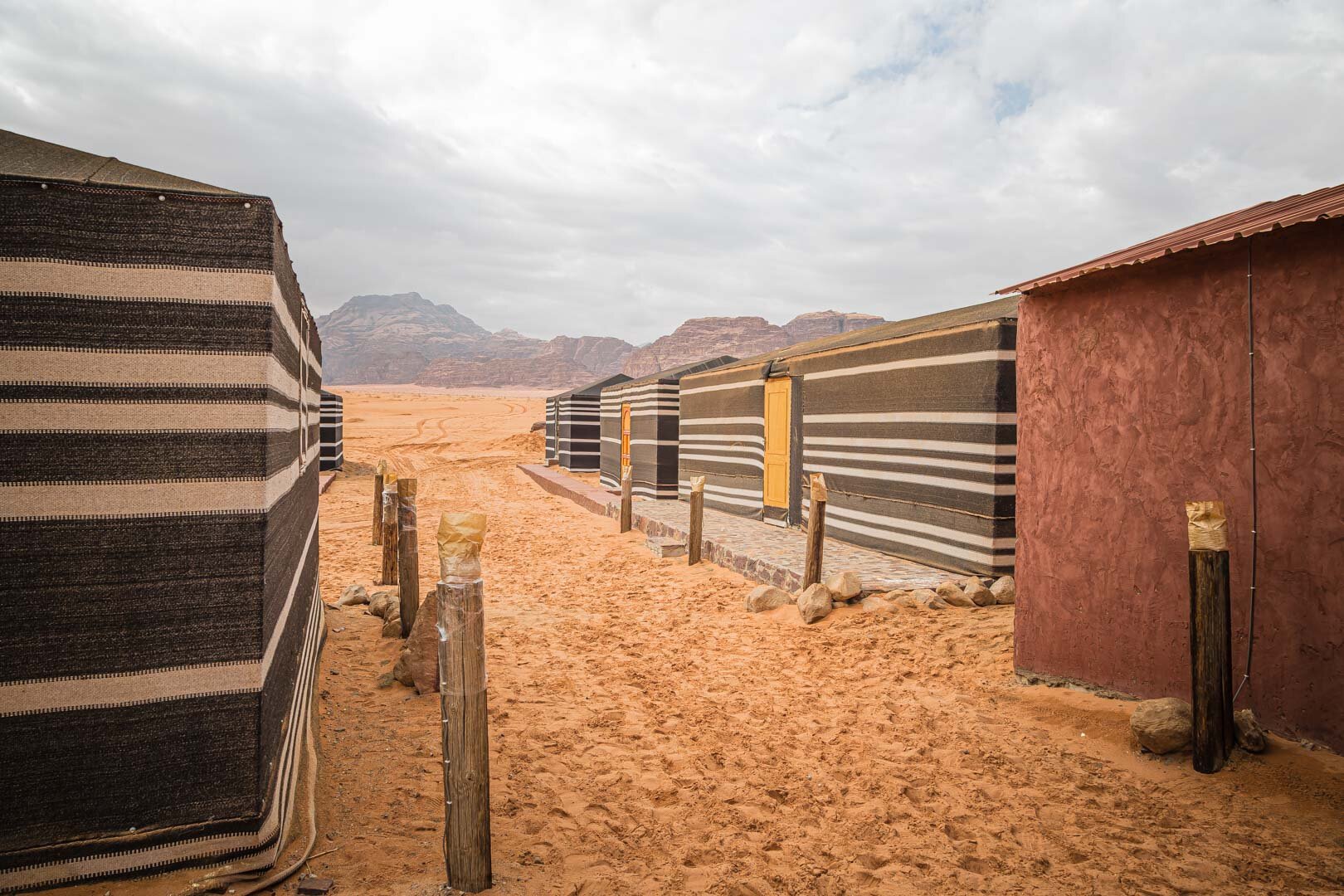
The camp and its owner
TRAVEL LOG
Sand and dust everywhere; having to clean lenses and cameras five times a day was a challenge. Despite using one of the most versatile lenses in the toolkit (the Canon 24-105mm f/4) which allowed to be wide enough to capture the environment very efficiently, the key was to have the subjects further away from the camera in order for them to appear smaller in relation to the magnificent landscape of Wadi Rum in Jordan. This was essential in demonstrating that, while yes our main characters are the students who are tackling this landscape, it is ultimately "mother nature" that allows it. Humbled by this experience and extremely appreciative to be a part of it.
FUN FACT: 'The Martian Domes' are directly inspired by Ridley Scott's film adaptation, The Martian Starring Matt Damon; famously shot in the iconic red sands of Wadi Rum in Jordan, as its environment and coloration easily resembles that of mars (with a little color correction of course).
The teachers had the cellphones and long range radios because they were to split up and accompany the groups of students trekking the desert. It was a situation in which there were about 7 groups of students wandering the desert during the day. One of the desert tour guides, Abu Youssef, and one of the teachers had to ride around in a truck and follow the students and their adventures for about two days in Wadi Rum.
THE INSTRUCTORS
In Wadi Rum, during the day, the Bedouin would teach us how to survive in the seemingly harsh world. They had an amazing ability to consolidate the initially immense life in the valleys into a few easy navigable steps. We were taught how to make soap from plants, how to use burnt goat hair to cover up wounds to keep them from getting infected, navigate via stars, maps, and a compass with no internet or radio access. The Bedouin even taught of how the women would create makeup from grounding up multicolored sediments and elements from the massive red sandstone mountains that almost pierced the sky.
OUR GUIDE THROUGH THE DESERT
Our facilitator was a man who was simply called Abu Youseff; although his real name was much, much longer. He was a godsend in these deserts. Intuitively, he knew the ways of nature; he grew up in it, and his family grew up in it as well. His 10-year-old son was busy setting up everyone's tents and monitoring their position and keeping track of time according to the sun and stones; he even knew how to get a jeep or truck unstuck from a sandpit! This young child was more adept at survival in these harsh environments than most were, or ever will be.
Abu Youssef
WADI RUM BY NIGHT
As the night fell upon the desert landscape the Bedouin would regale everyone with stories of overcoming natures struggles by finding solutions through cooperation with nature itself. They sang for us and taught us how to cook using whats called a Zarb; This is a way of cooking an entire meat meal using geothermal energy.








